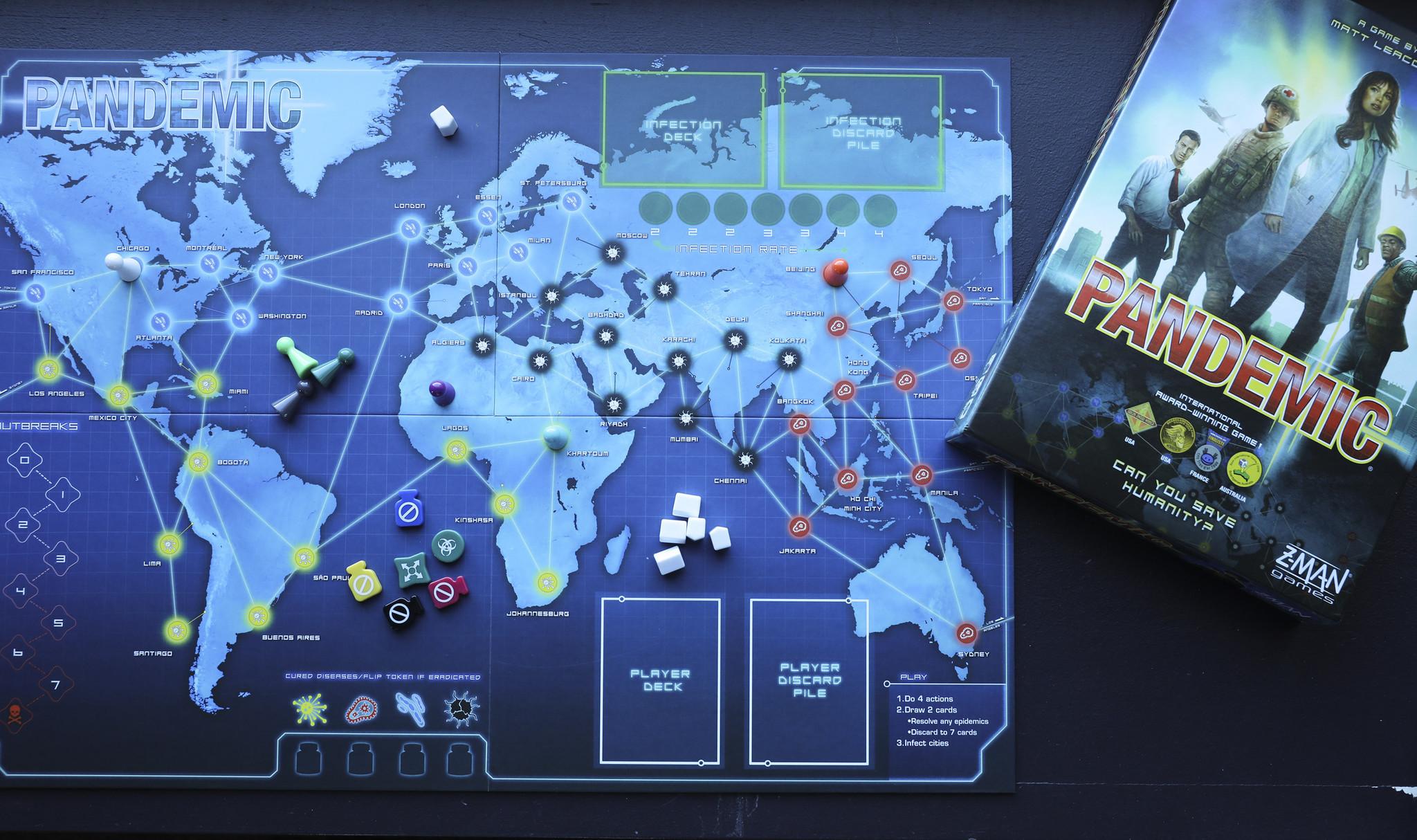I analyze Pandemic, one of my favorite board games. I model my analysis order on the paper (Aesthetics -> Dynamics -> Mechanics).
The aesthetics present in Pandemic are Fellowship, Challenge, and a bit of Discovery.
Starting with Fellowship, the facet which sets Pandemic apart is that it’s cooperative. The dynamics that bring about this experience are players planning together about future steps on each others’ turns. Each player is engaged throughout the whole game, because even if it’s not your turn, you can (and should) be thinking about what the current player should optimally do. There are many mechanics that support this dynamic: each player has a different role with different special powers, meaning one player cannot just monopolize the strategy of the whole game; all players work with perfect information of the board and one another’s “hands”; the objective for all players is common; and the “time” pressure makes you lose if either cards or blocks run out.
Moving onto Challenge, Pandemic is also a hard game to win, which is what makes it so addictive – you’re always thinking, “I was so close this time—let’s try again!” The dynamics that support this are that players try to think ahead and predict what might be coming in the Infection Deck. The mechanics comprising this are that the Infection Deck and the Epidemic cards are highly stochastic, which makes it fun to try and predict.
And finally, a big reason why I return to the game is Discovery – no iteration of the game is the same as a previous iteration. Players are working with a different world every time, and have the chance to modify and alter the state of this world. The dynamics and mechanics that support this Discovery are again, the randomness baked into the Infection process.



